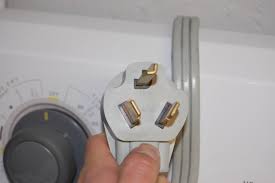I've searched and can't find an answer. I'm working on my e-HERMS build and have a question about my 250v dryer outlet to run power to my control panel.
Here is what my dryer plug and receptacle look like below. It's NEMA 10-30. The receptacle has black, white and copper ground. Some sites say 10-30 isn't grounded, buy mine is grounded. My house was built in 1988.
Can I simply buy another 10-30 dryer cord, cut the terminal rings off and wire up a NEMA L6-30 or L5-30? Is this a common thing to do?
I am going to run this cord into an inline GFCI extension cord.
Hobnob


Here is what my dryer plug and receptacle look like below. It's NEMA 10-30. The receptacle has black, white and copper ground. Some sites say 10-30 isn't grounded, buy mine is grounded. My house was built in 1988.
Can I simply buy another 10-30 dryer cord, cut the terminal rings off and wire up a NEMA L6-30 or L5-30? Is this a common thing to do?
I am going to run this cord into an inline GFCI extension cord.
Hobnob




